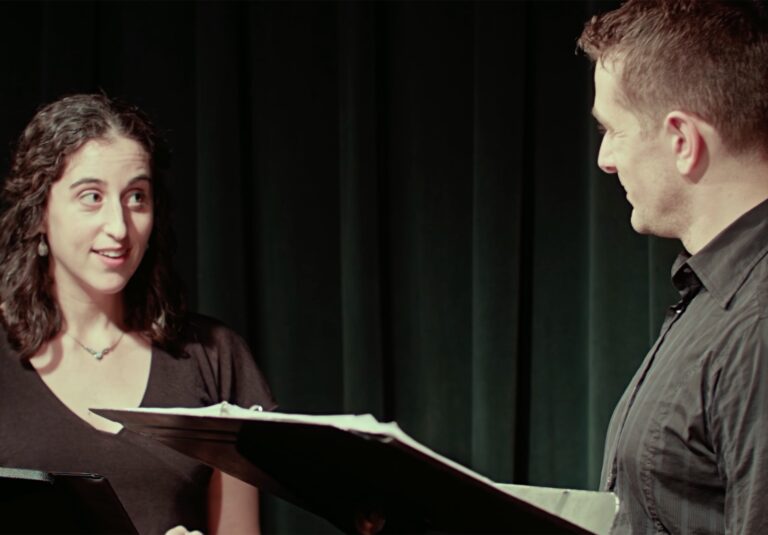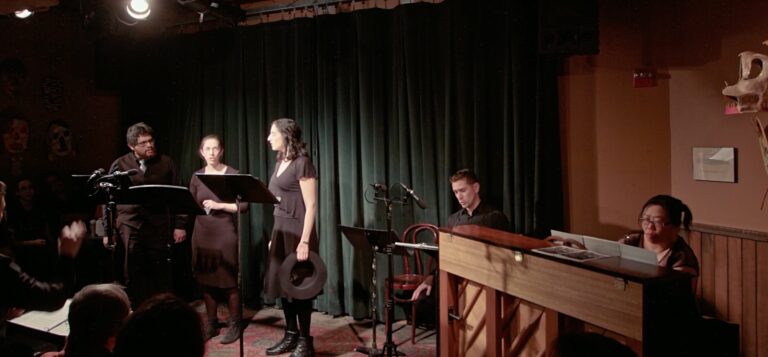The Hat: Arendt Meets Heidegger
The Hat: Arendt Meets Heidegger is an opera that imagines the meeting of Hannah Arendt and Martin Heidegger, two greatly influential thinkers of the 20th century, who sustained a relationship despite their disparate perspectives and background. Arendt, a Jew, was known for her Origins of Totalitarianism, among other works of political theory; Heidegger, whose Being and Time is a classic philosophy text, was an active member of the Nazi party. Arendt and Heidegger’s story is a love story; but it is also a story of philosophy and epistemology, student/teacher and hierarchical relationships, and political and social relevance. With a touch of humor, it is an opera with much to appeal to people who may or may not be familiar with the Arendt’s and Heidegger’s writings.

This new opera is a collaborative creative project by myself and the writer and artist Zsuzsanna Ardó, who wrote the libretto. The libretto is based on Zsuzsanna’s play of the same title, published on both sides of the Atlantic. The play’s rave reviews include praise from Dr. Martine van Ittersum of the University of Dundee—“Philosophy and sex make for a surprisingly potent combination. Utterly compelling and thought-provoking”—and Rick Lewis, editor of Philosophy Now—“She has clearly done some remarkably detailed reading to make sure her account of their first meeting is consistent with all the known facts – but her real achievement is to make their meeting and their subsequent affair/seduction/meeting of minds believable in human terms. The script crackles with intellectual and sexual tension.” (Here are some more reviews.)
My music draws on the soundscapes of Arendt and Heidegger’s worlds, with hints of Jewish and German folk music as well as the European Classical music that they would have listened to together. The musical language, though, my own, with my characteristic polyrhythmic intricacy and melodic lyricism. My concept for the opera involves all singers and instrumentalists being present on-stage at all times. When a singer’s character is not in a given scene, that singer will join the instrumentalists at the perimeter of the stage as part of the ensemble. Projections will replace scenery, and the ensemble will literally blend into the background.

